Today, let’s make a Strawberry Latte using the Korean strawberry syrup that’s been going viral lately! It’s a popular menu item at Korean cafes. Korean cheong recipe is so easy and simple that people often make it at home.
Table of Contents
What is Korean Strawberry Syrup?
Have you seen the viral strawberry Korean syrup trend going around lately? In Korean, this type of Korean syrup is called “Cheong” (청). It’s a traditional Korean fruit syrup made by mixing fresh fruit with sugar and letting it sit over time to naturally preserve the flavors.
Some of the most popular traditional cheong varieties are maesil-cheong (plum syrup) and yuja-cheong (yuja syrup). Maesil-cheong is often used in Korean cooking, while yuja sryup is often enjoyed as a tea during the winter.
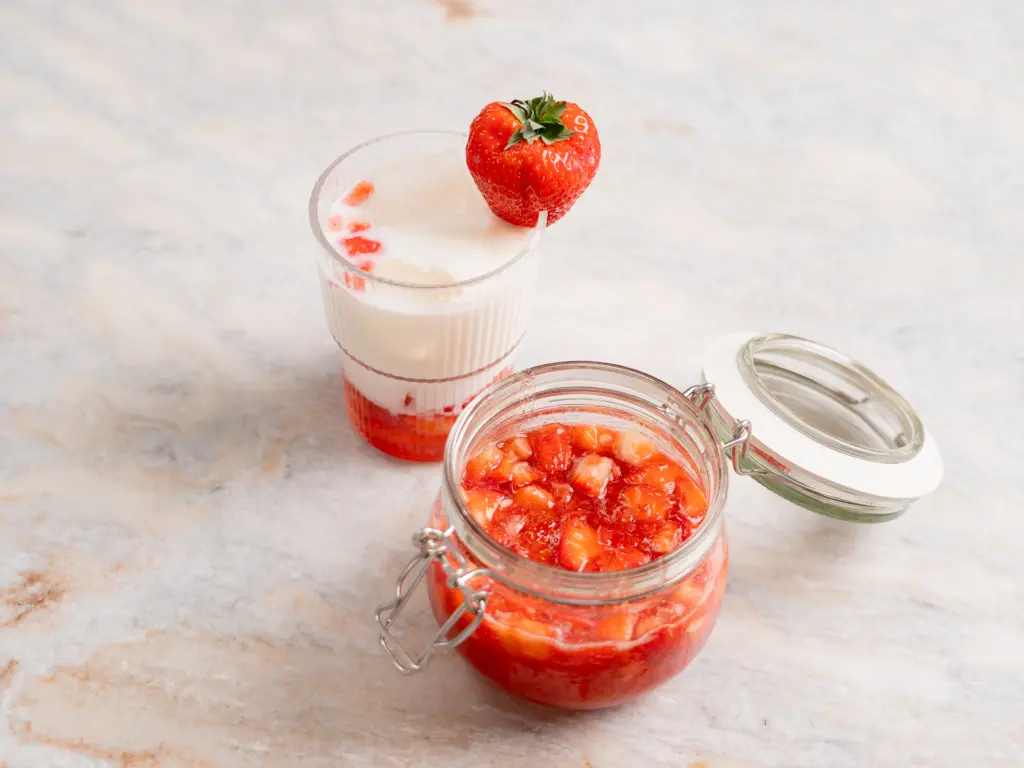
These days, Cheong is made with a much wider variety of fruits—especially seasonal ones—and you’ll frequently find drinks like lattes and ades made with fruit Cheong in Korean cafes. One of the charms of Korean-style syrup is how it celebrates seasonal fruit, making it easy to enjoy fresh flavors all year round, whether at home or in a trendy cafe.
Nowadays, cheong is made with a much wider variety of fruits-especially seasonal fruits-and you’ll often find drinks like lattes and ades made with fruit cheong in Korean cafes. One of the charms of Korean-style syrup is how it celebrates seasonal fruit, making it easy to enjoy fresh flavors year-round, whether at home or in a trendy cafe.
Viral Strawberry Syrup vs Real Korean Strawberry Cheong
Have you seen those viral “Korean strawberry syrup” videos on TikTok? Many of them show a syrup that’s left to ferment or “rest” for a week before use. But actually, real Korean strawberry Cheong doesn’t require that kind of aging process.
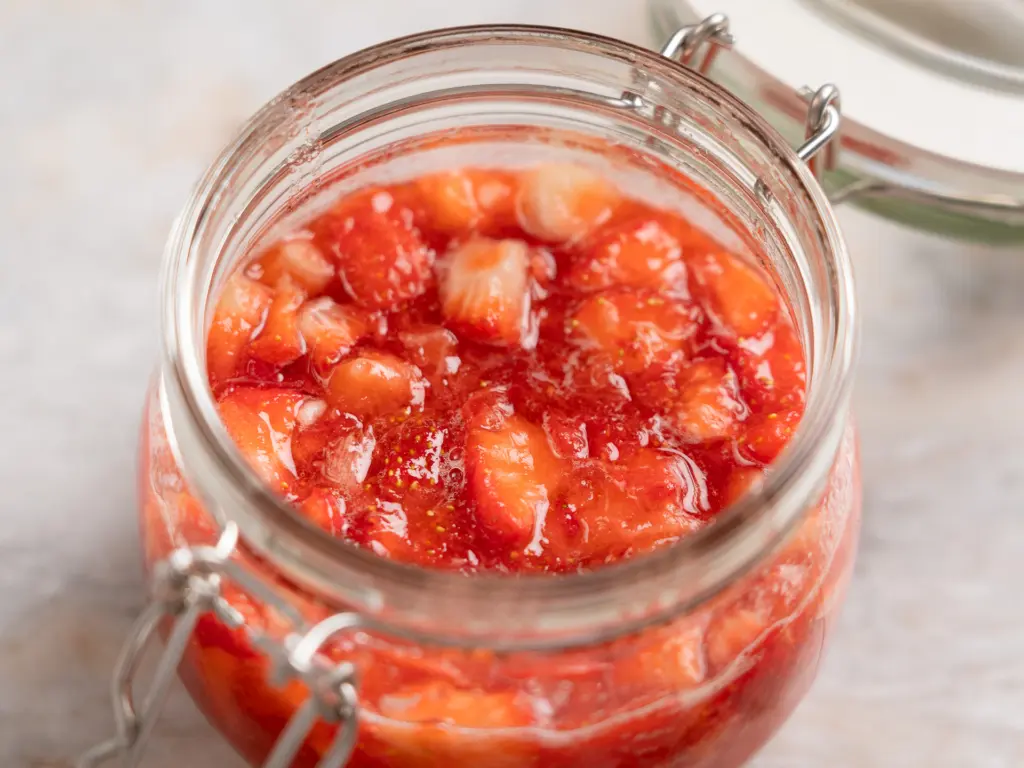
In Korea, most people simply refrigerate the strawberry syrup right after making it, and some may leave it at room temperature for just a day before storing it. It’s totally fine to enjoy it immediately — there’s no need to wait a week.
Another major difference? In many viral videos, the strawberries are thrown away after the syrup is extracted. But in authentic Korean Cheong, you never throw away the fruit. The sweet, syrup-soaked strawberry pieces are an essential part of the experience. That juicy, chunky texture is what makes Korean-style syrup so special — it’s meant to be enjoyed with both the syrup and the fruit together.
5 Korean Cheong You Should Know
Let’s take a look at 5 representative Korean syrups, known as Cheong (청) in Korean. These syrups are made by preserving fruits in sugar, creating a sweet, flavorful syrup that’s used in drinks, desserts, and even cooking.
Maesil Cheong (Green Plum Syrup)
This syrup is made by mixing green plums (maesil) with sugar. It’s commonly used in Korean cooking to add flavor and sweetness, and it also helps remove the strong odor from meat or fish.
raditionally, Koreans drink it diluted in water after meals — a kind of dessert tea that aids digestion. In fact, older generations used to drink it this way regularly. When fermented further, maesil cheong can even be turned into maesil wine. Since it’s often used in cooking, you can usually find it at Asian grocery stores.
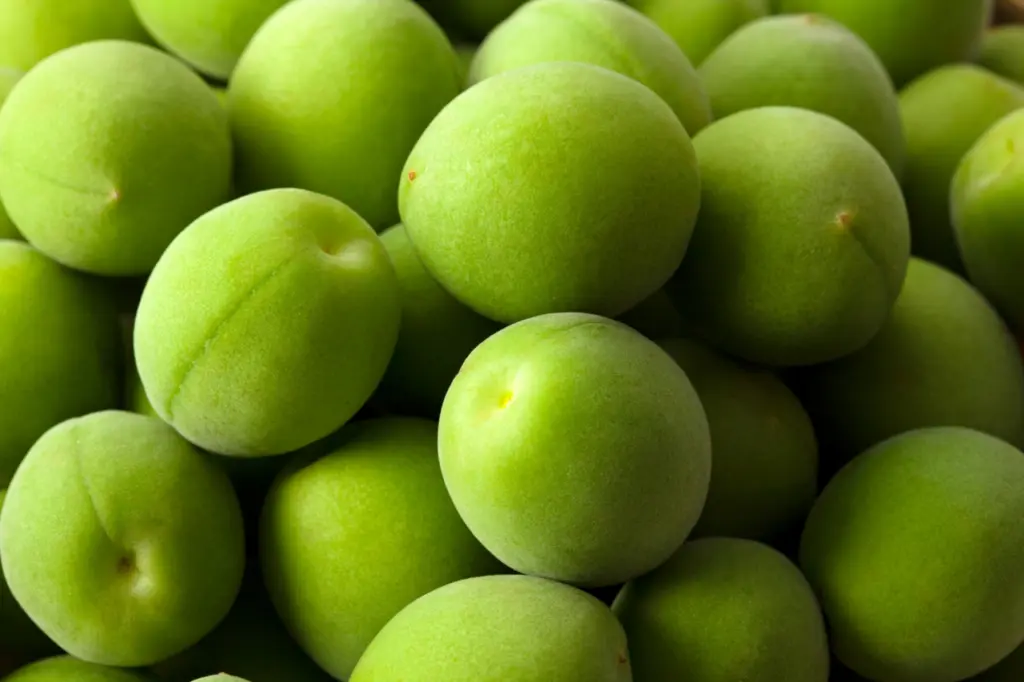
Yuja Cheong (Yuzu Syrup)
Made by preserving yuja (yuzu) slices in sugar, this syrup is especially popular in winter. It’s rich in vitamin C and is known for helping with colds, so Koreans often drink it as a hot tea when they’re sick. These days, yuja cheong is also used to make trendy treats like yuzu pound cakes, or mixed with sparkling water to make a refreshing yuja ade.
Strawberry Cheong (Strawberry Syrup)
The strawberry Korean cheong we’re making today is a syrup made by mixing strawberries with sugar. It’s an essential ingredient in many seasonal drinks sold in Korean cafes.
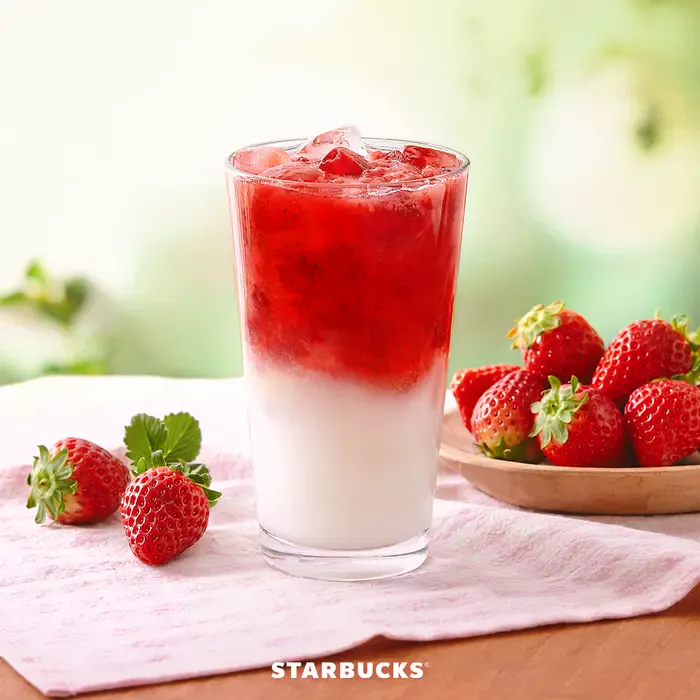
While strawberries are in season in Europe during the summer, Korea’s strawberry season lasts from late winter to spring. During this time, Korean cafes roll out strawberry cakes, strawberry lattes, and more-and strawberry syrup is essential for these drinks. Mix it with milk for a strawberry latte, or add sparkling water for a strawberry ade. Although it’s served in cafes, it’s also easy to make at home – definitely a recipe you don’t want to miss.
Lemon Cheong (Lemon Syrup)
Thinly sliced lemons are preserved in sugar to make this Korean-style lemon syrup. Just like yuja cheong, it can be mixed with hot water to enjoy as a lemon tea or with sparkling water for a homemade lemonade. This is one of the most common syrups you’ll see at Korean cafés.
Tomato Cheong
This is a trendy seasonal menu item at stylish Korean cafés during summer. It starts with tomatoes and sugar, but adds fresh basil for a fragrant, herbal twist that makes it feel more elevated. Mixed with sparkling water, it turns into a tangy-sweet tomato ade — the perfect drink to beat the summer heat. Yes, this is the same syrup used in the viral basil tomato ade recipe.
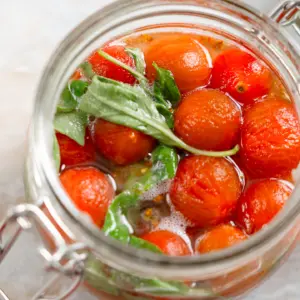
The Difference Between Korean Fruit Syrup and Jam?
Korean cheong (fruit Korean syrup) is often mistaken for fruit jam, but there are some key differences in both how they’re made and how they taste.
No Cooking Involved
While fruit jam is made by boiling fruit and sugar together, Korean syrup is made by marinating the fruit in sugar without any heat. It’s a no-cook, slow infusion method that naturally draws out the juice over time.
Texture
Jam has a thick, spreadable texture that’s more sticky and dense. Korean syrup, on the other hand, is runnier and more liquid — although it’s still sticky, it flows more easily.
Real Fruit Pieces
One of the most charming parts of Korean syrup is that the fruit pieces remain intact. The fruit isn’t broken down or melted like in jam, so you get real chunks of fruit with every spoonful — perfect for drinks or topping desserts.
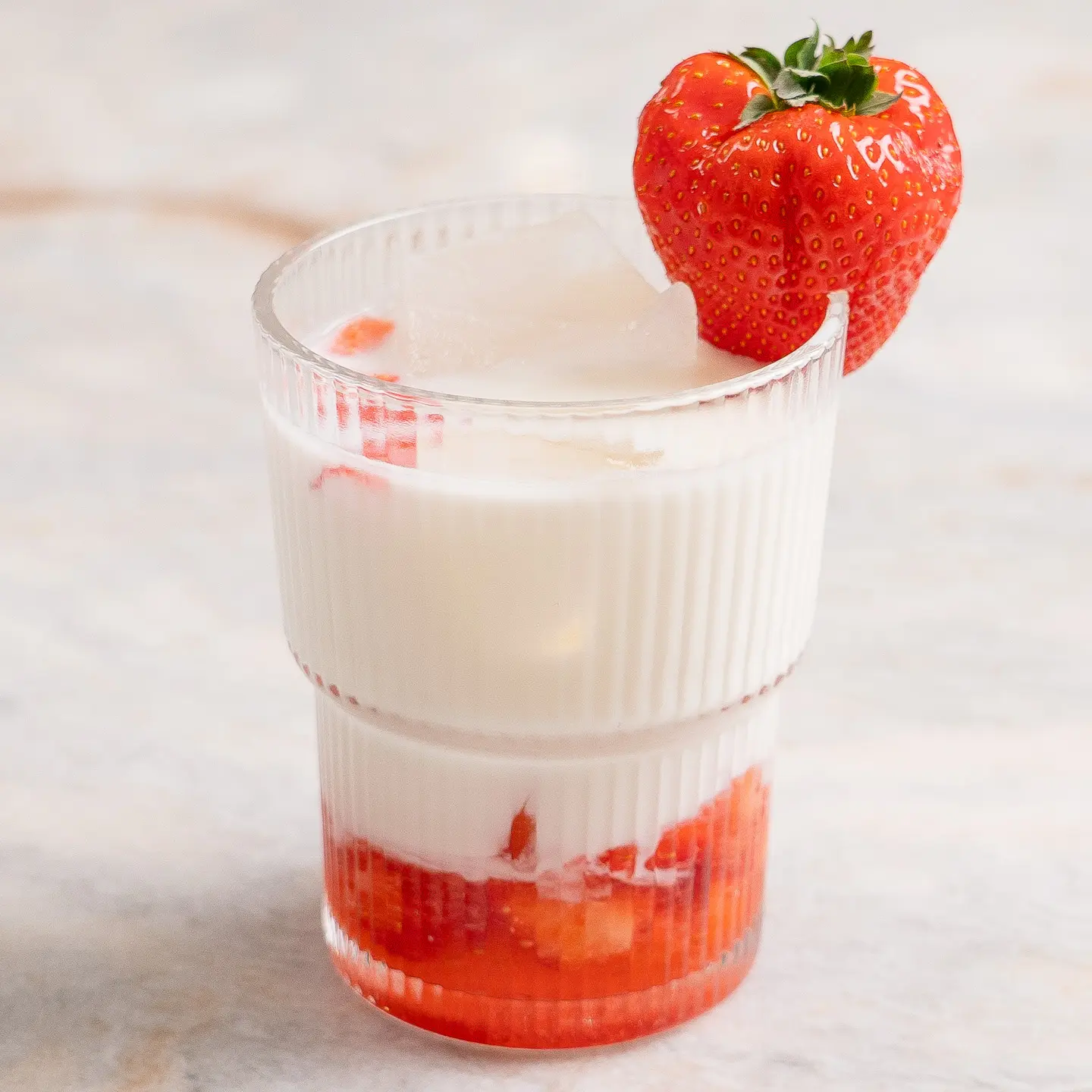
Ingredients for Korean Strawberry Syrup
This is the recipe for strawberry simple syrup. You only need 3 simple ingredients for Korean Cheong with strawberries.
- Strawberries: Wash the strawberries thoroughly and remove the stems.
- Sugar: Use the same amount of sugar as strawberries. This 1:1 ratio helps preserve the fruit and create the syrupy texture.
- Lemon juice: Lemon juice is the key ingredient that adds brightness and a refreshing sweet-sour balance to the syrup.
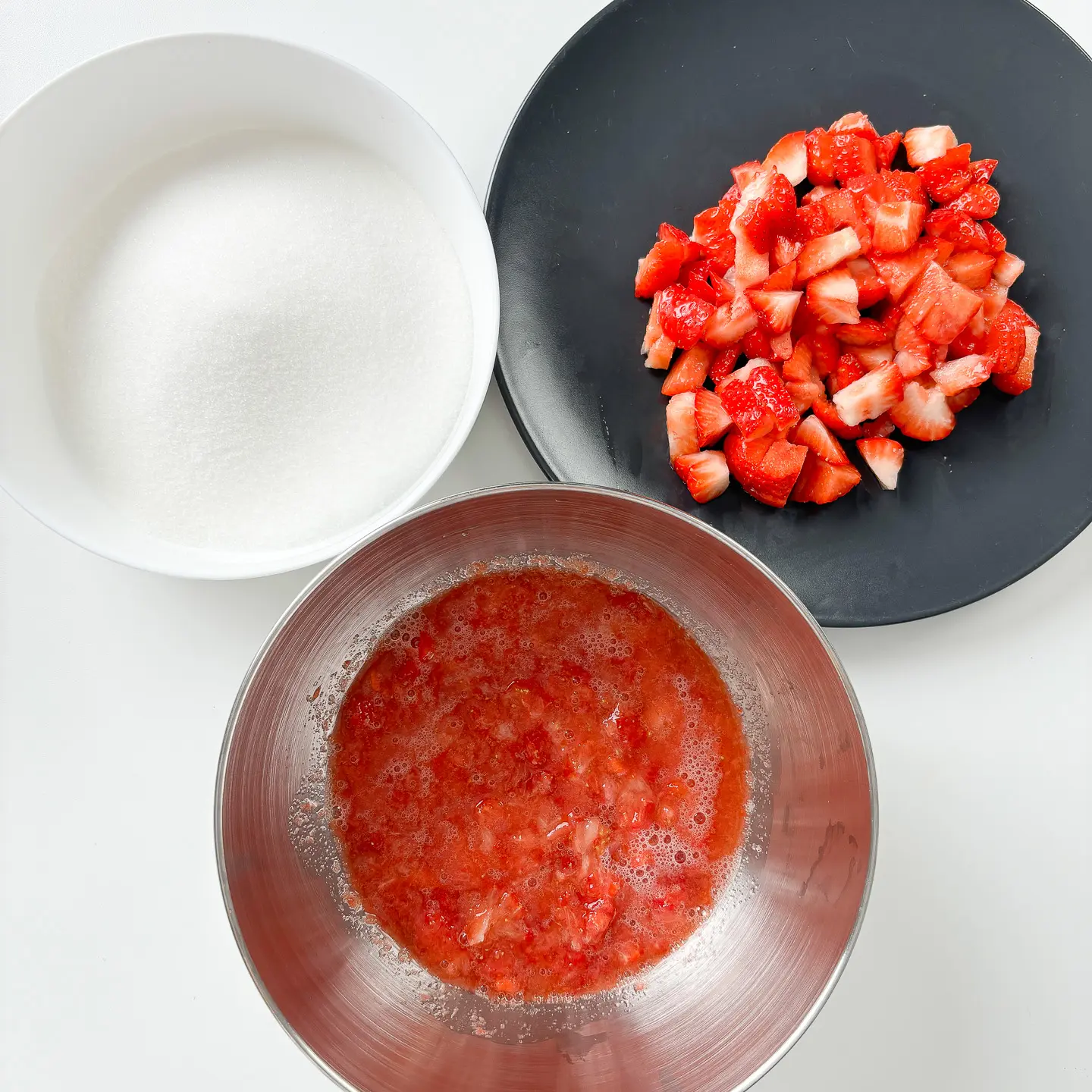
Healthier Version
You can use stevia instead of sugar to make a low-sugar(zero sugar) Strawberry Cheong. Since stevia is much sweeter than sugar, be sure to adjust the amount. Also, shorten the fermentation time compared to using regular sugar.
How to Use Korean Strawberry Cheong
Strawberry Latte
How to make strawberry syrup for drinks? Mix strawberry syrup with milk and ice to make the popular strawberry latte you often see in Korean cafes. It’s the same delicious drink without the expensive price tag. Add a few strawberry slices on top for that perfect cafe-style look.
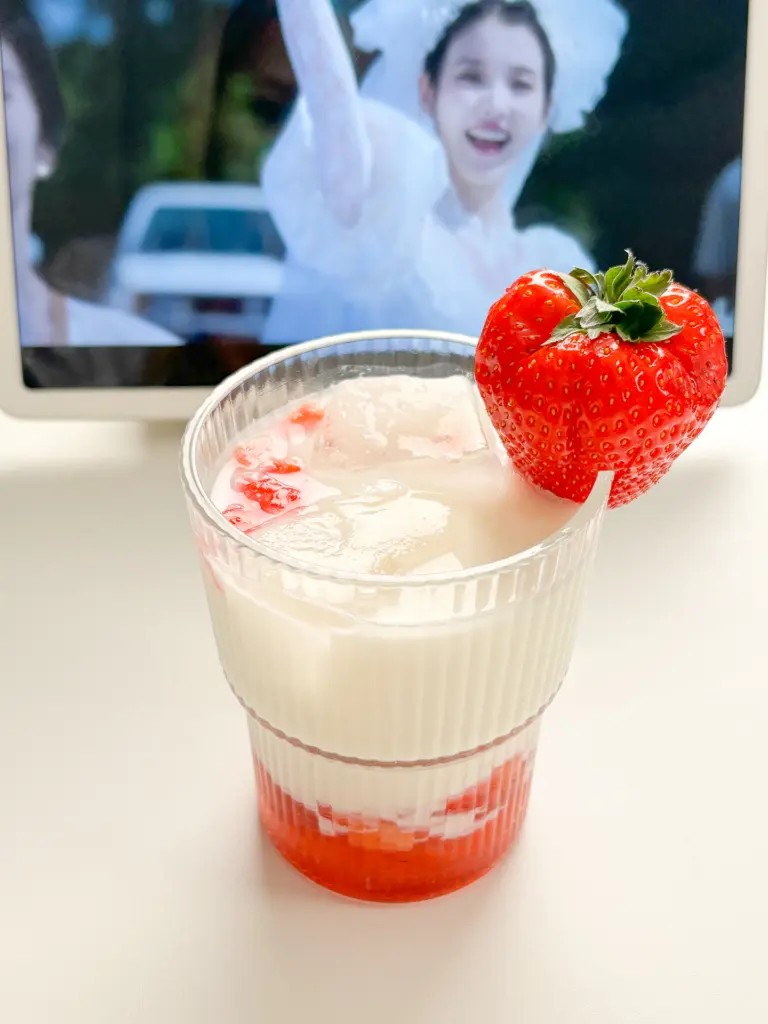
Strawberry Ade
Combine strawberry syrup with sparkling water and ice for a refreshing strawberry ade, just like the ones sold in trendy Korean cafes. It’s incredibly tasty—so much so that you’ll find yourself making a new batch of syrup every strawberry season.
Strawberry Yogurt
Add the syrup to plain or Greek yogurt for a luxurious strawberry yogurt. Since the syrup is already sweet, it’s best to use unsweetened yogurt. Top with a few extra strawberry slices for a beautiful and simple breakfast.
Strawberry Ice Cream
Spoon the syrup over vanilla ice cream to turn it into an elevated version of a strawberry sundae. It feels like a Michelin-style dessert you can enjoy at home. Doesn’t the thought of a gourmet treat in your own kitchen sound amazing?
Sterilizing Glass Jars
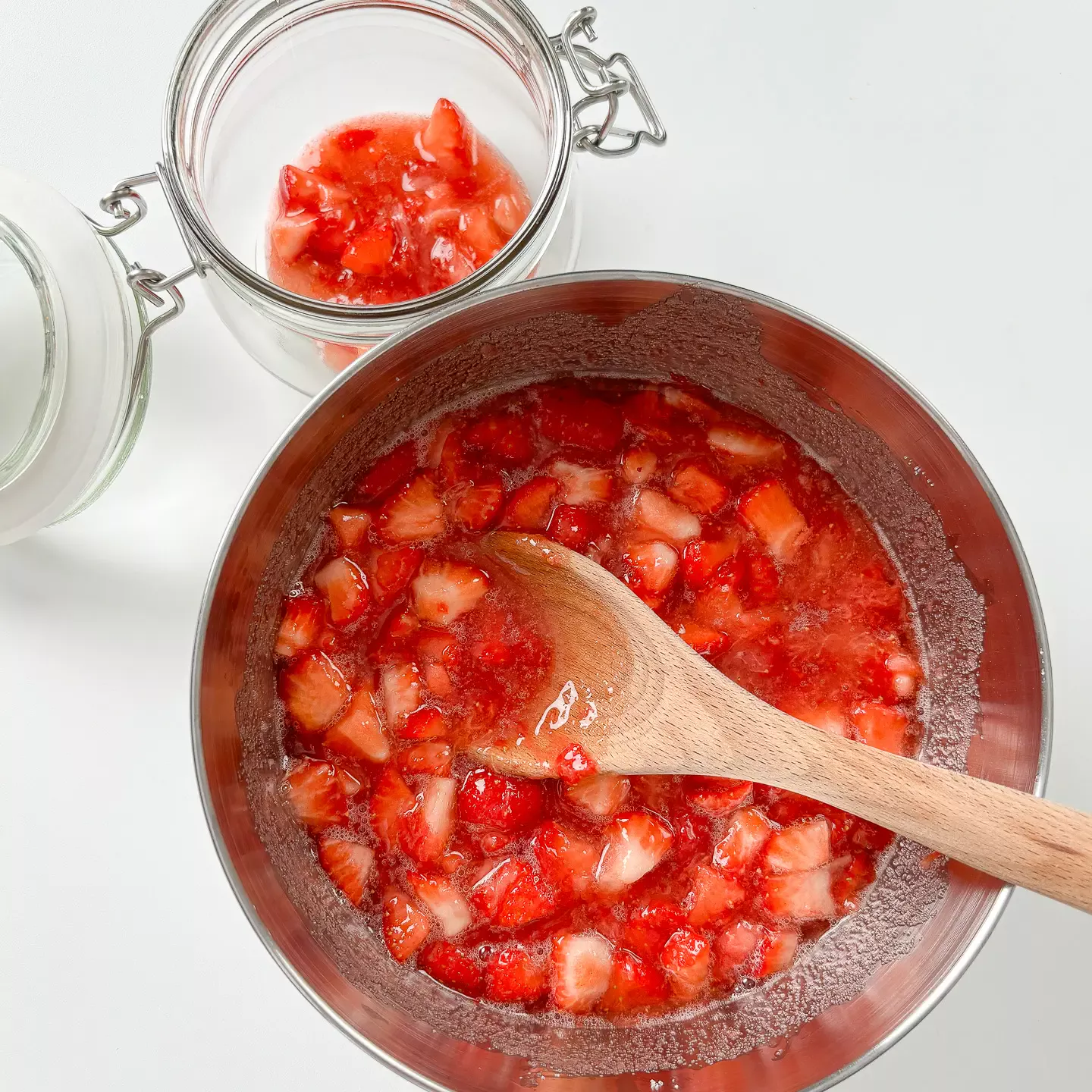
When making Korean syrup, it’s important to sterilize the glass jar you’ll use to store it. Since you’ll be storing the syrup for a long time, like jam or sauce, you need to prevent mold from growing.
Fill a saucepan with about one-third water and place the clean jars upside down in the saucepan. When the water comes to a full boil, continue boiling for 5 minutes. Then reduce the heat to medium and continue boiling for another 10 minutes. Carefully remove the jars with rubber gloves and allow them to dry completely.
Shelf Life
Korean syrup with strawberries lasts up to 3 weeks in the fridge, but it’s best to consume it within 10 days for the freshest flavor and texture.
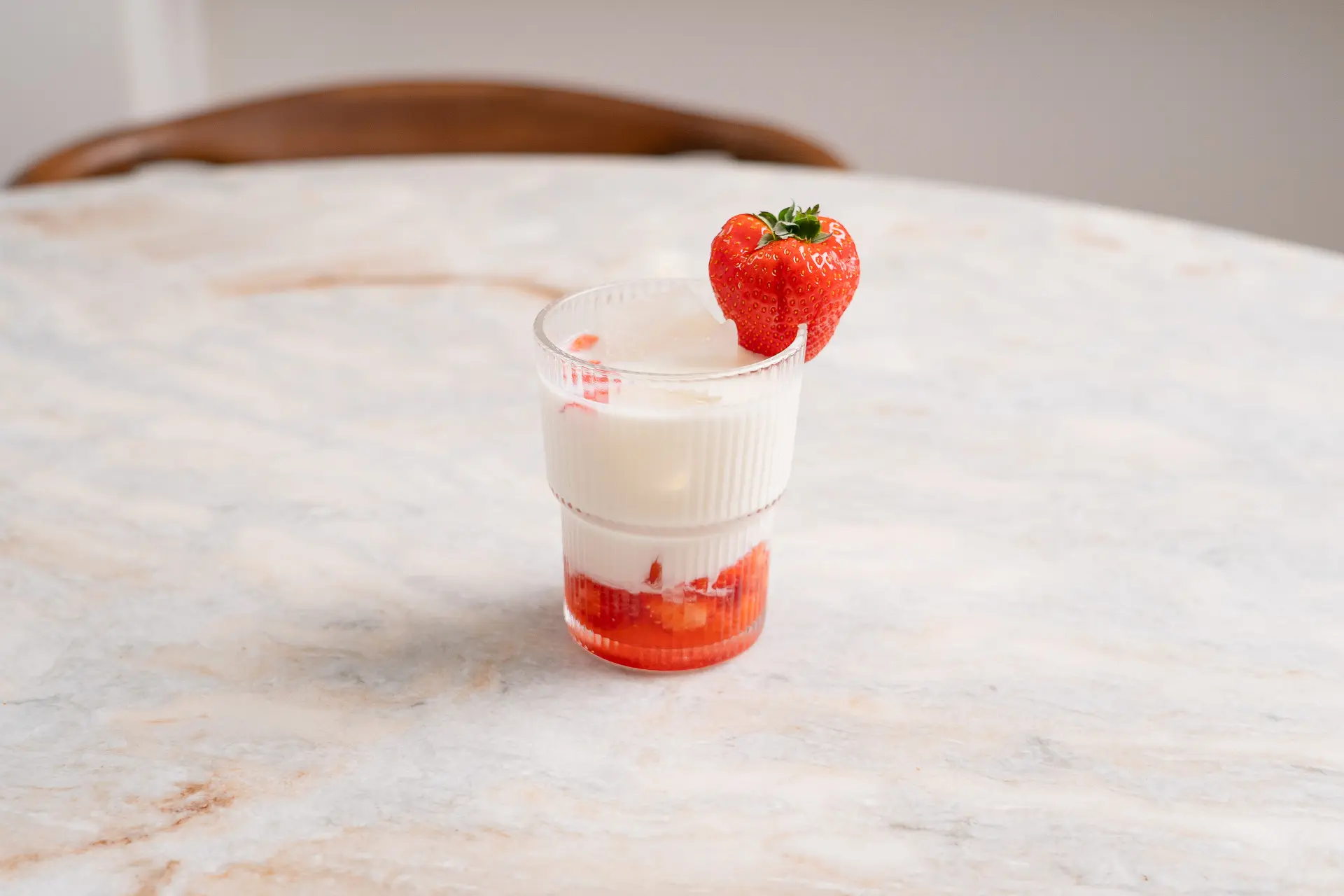
Get Ingredients Here
- Korean Cheong Jar: https://amzn.to/4cB2rmt (US), https://amzn.to/3EsUEe4 (NL, BE), https://amzn.to/42wF4G5 (UK), https://amzn.to/42Dol43 (DE)
Disclosure: Blonde Kimchi is part of the Amazon Services LLC Associates Program, an affiliate advertising program that allows websites to earn advertising fees by linking to Amazon.com and promoting products.

Viral Korean Strawberry Syrup – Strawberry Latte
Ingredients
- 500 g strawberries
- 500 g sugar
- 4 tbsp lemon juice
- 2 tbsp strawberry pieces of strawberry choeng
- 2 tbsp strawberry syrup of strawberry choeng
- 1 cup cold milk
- 1 cup ice
Equipment
- 1 Cutting board & knife
- 1 spoon or spatula
- 1 clean sterilized glass jar with lid
Method
- Wash the strawberries thoroughly and remove the stems.
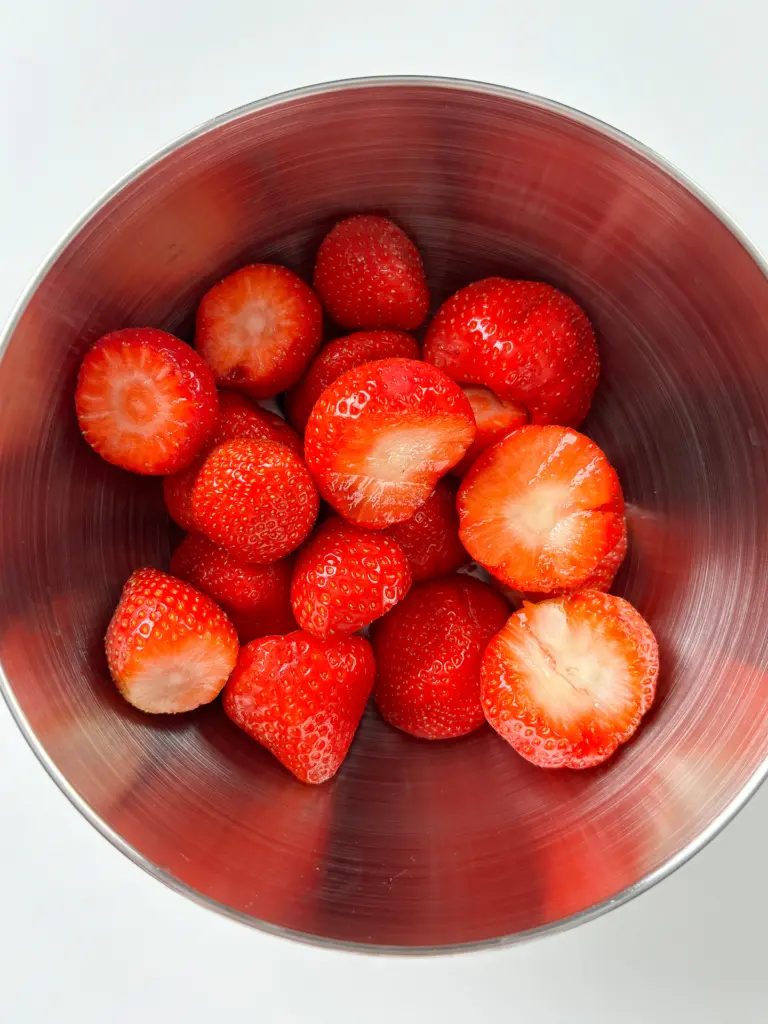
- Finely chop half of the strawberries (about 250g).
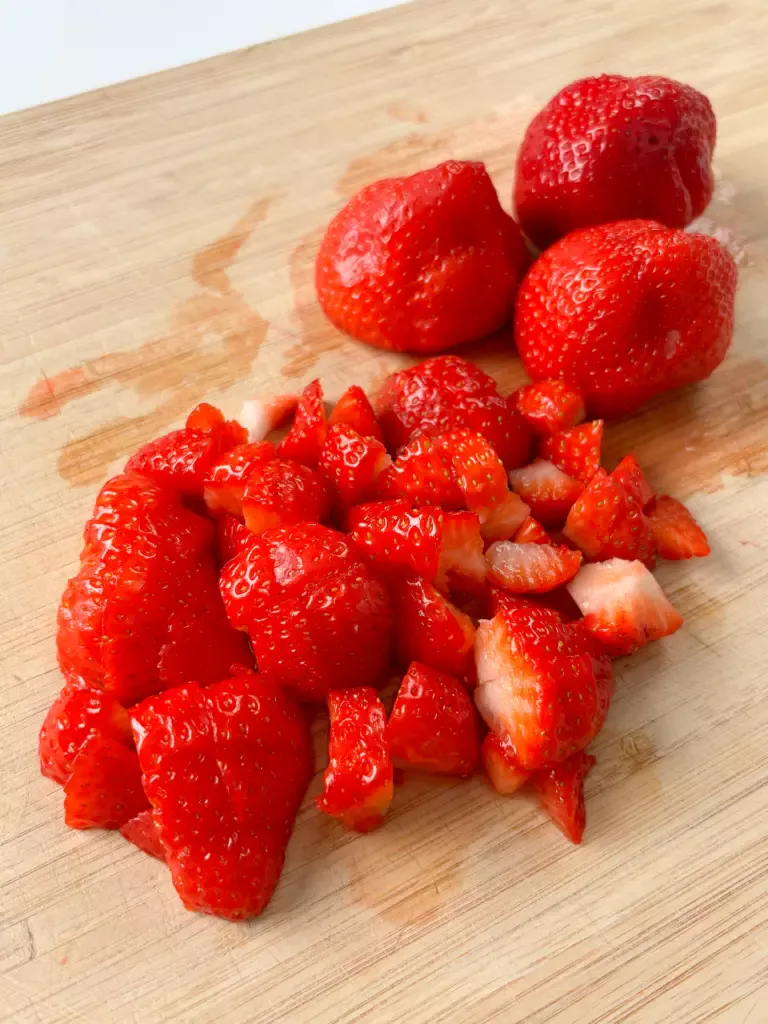
- Mash the remaining half (about 250g) with a fork or masher.
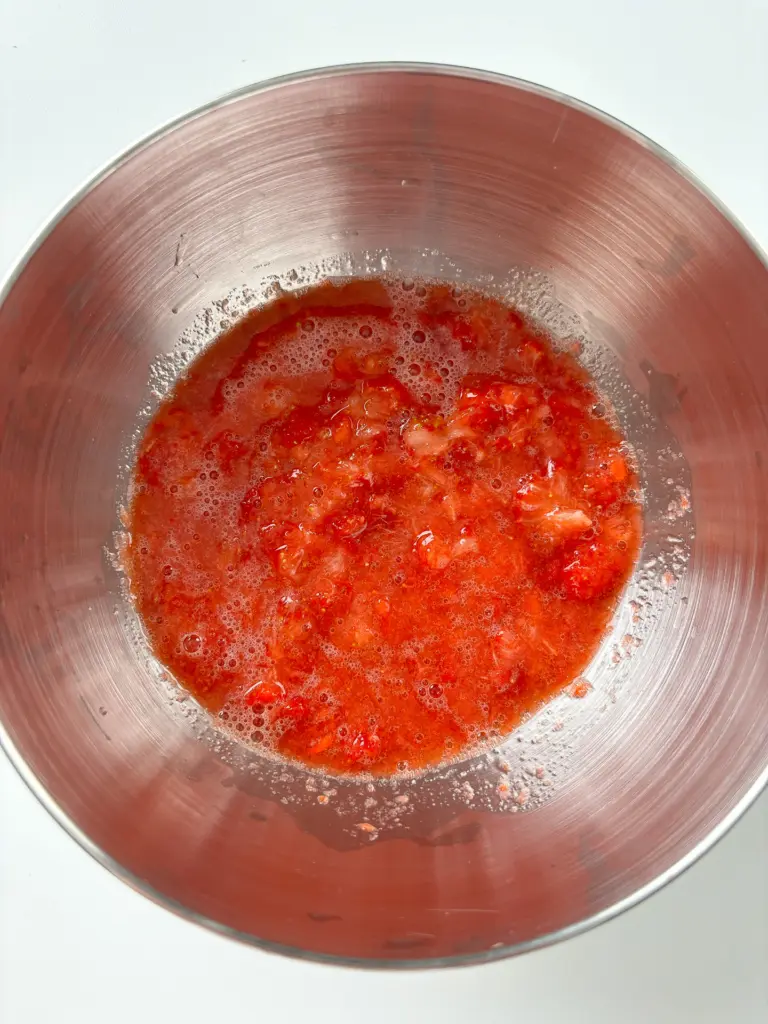
- In a large bowl, combine the chopped and mashed strawberries.
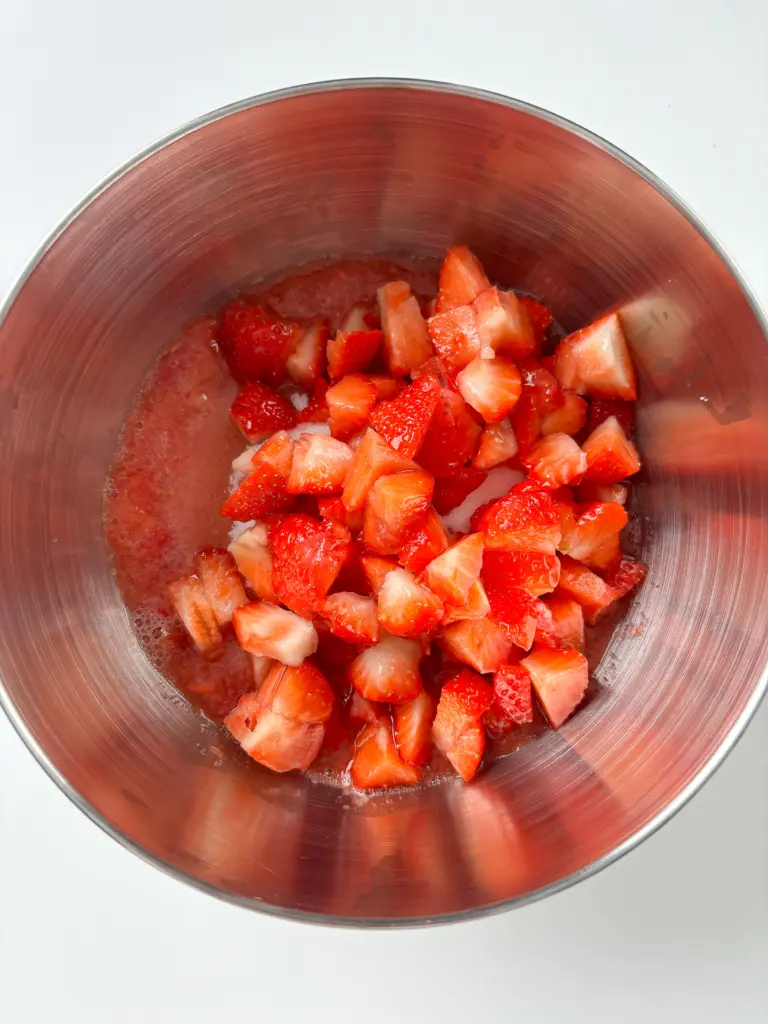
- Add 500g of sugar and 4 tablespoons of lemon juice.
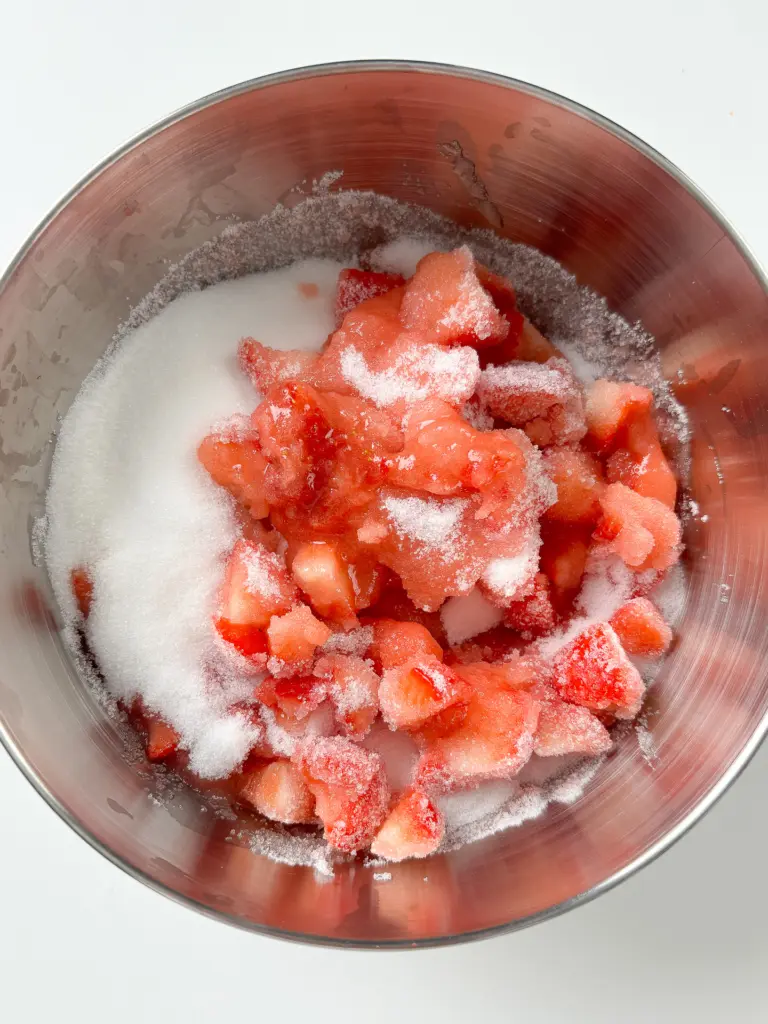
- Gently mix until the sugar is well incorporated with the strawberries.
- Transfer to a sterilized jar.
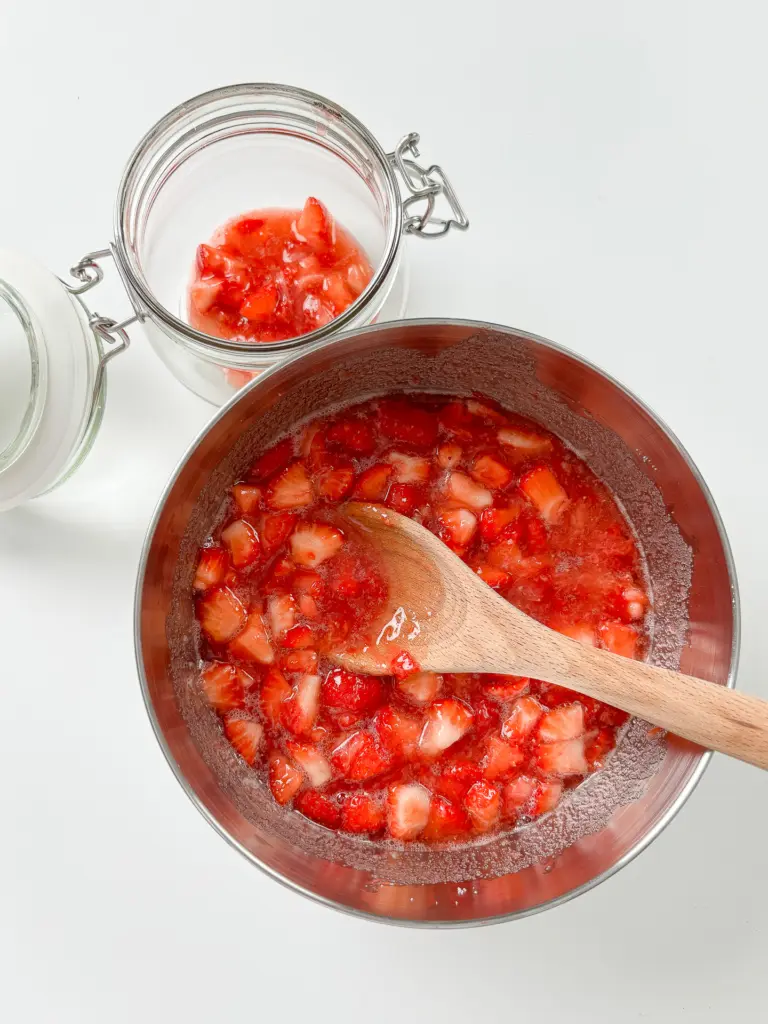
- Store in the fridge.

- In a glass, add 2 tablespoons of strawberry pieces and 2 tablespoons of syrup.
- Fill the glass with 1 cup of ice.
- Pour in 1 cup of cold milk.
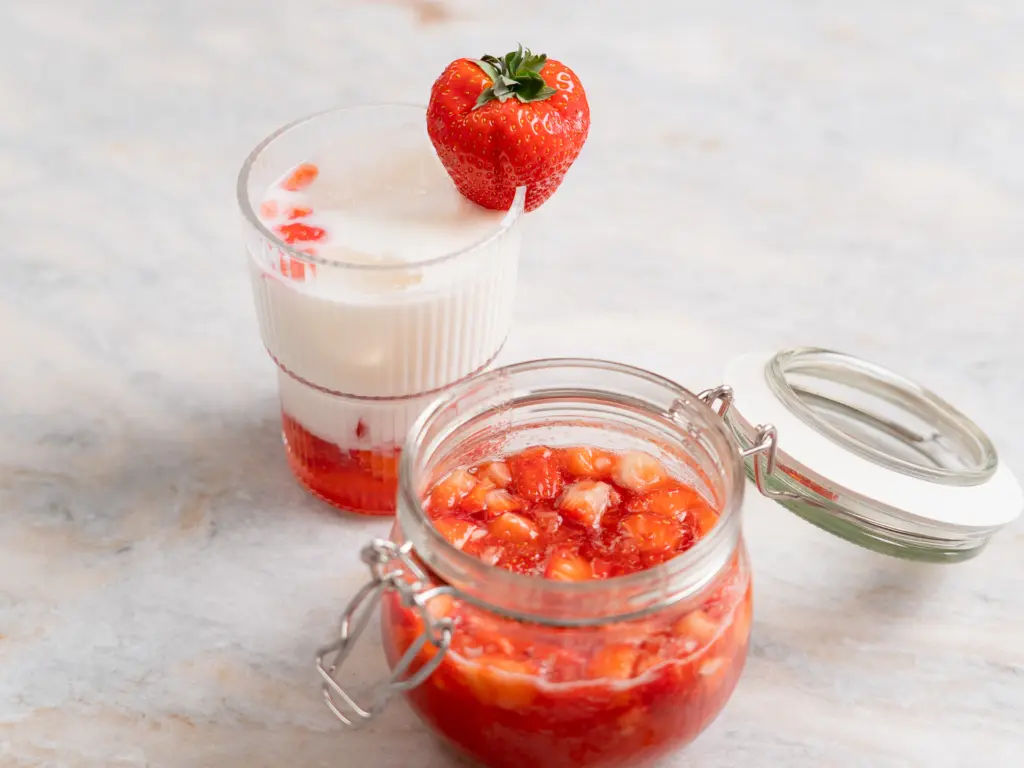
- Jal meokgetseumnida! 잘 먹겠습니다!

- Stir well before drinking.
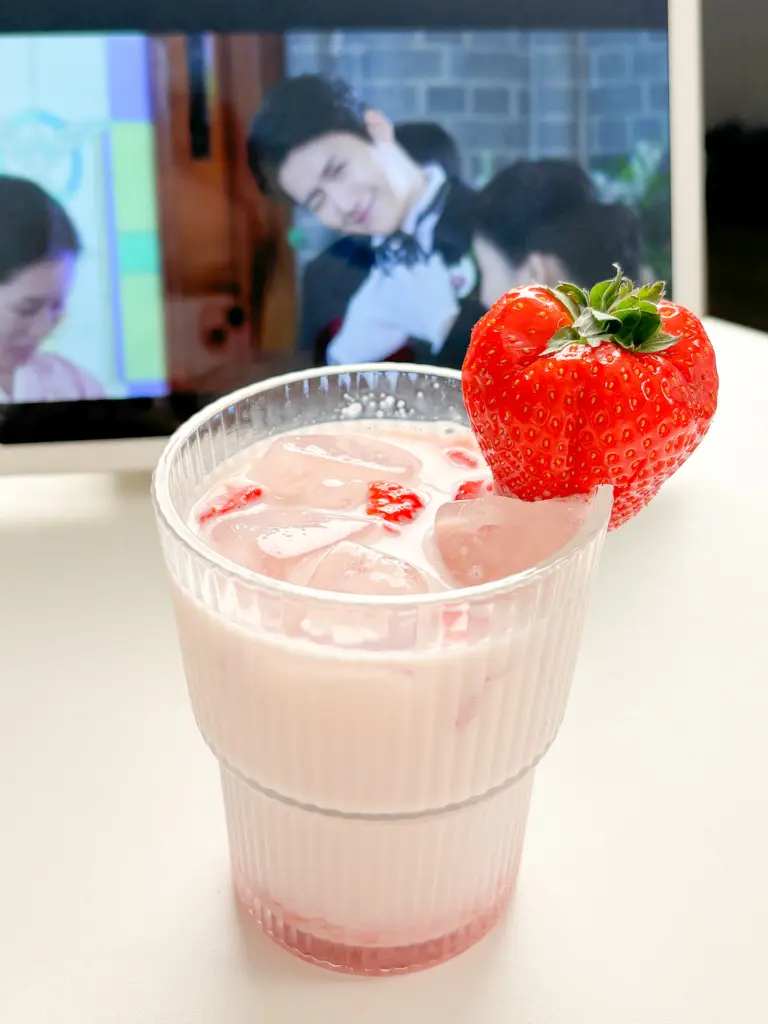
Nutritional information is an estimate. For personalized advice, consult a registered nutritionist.
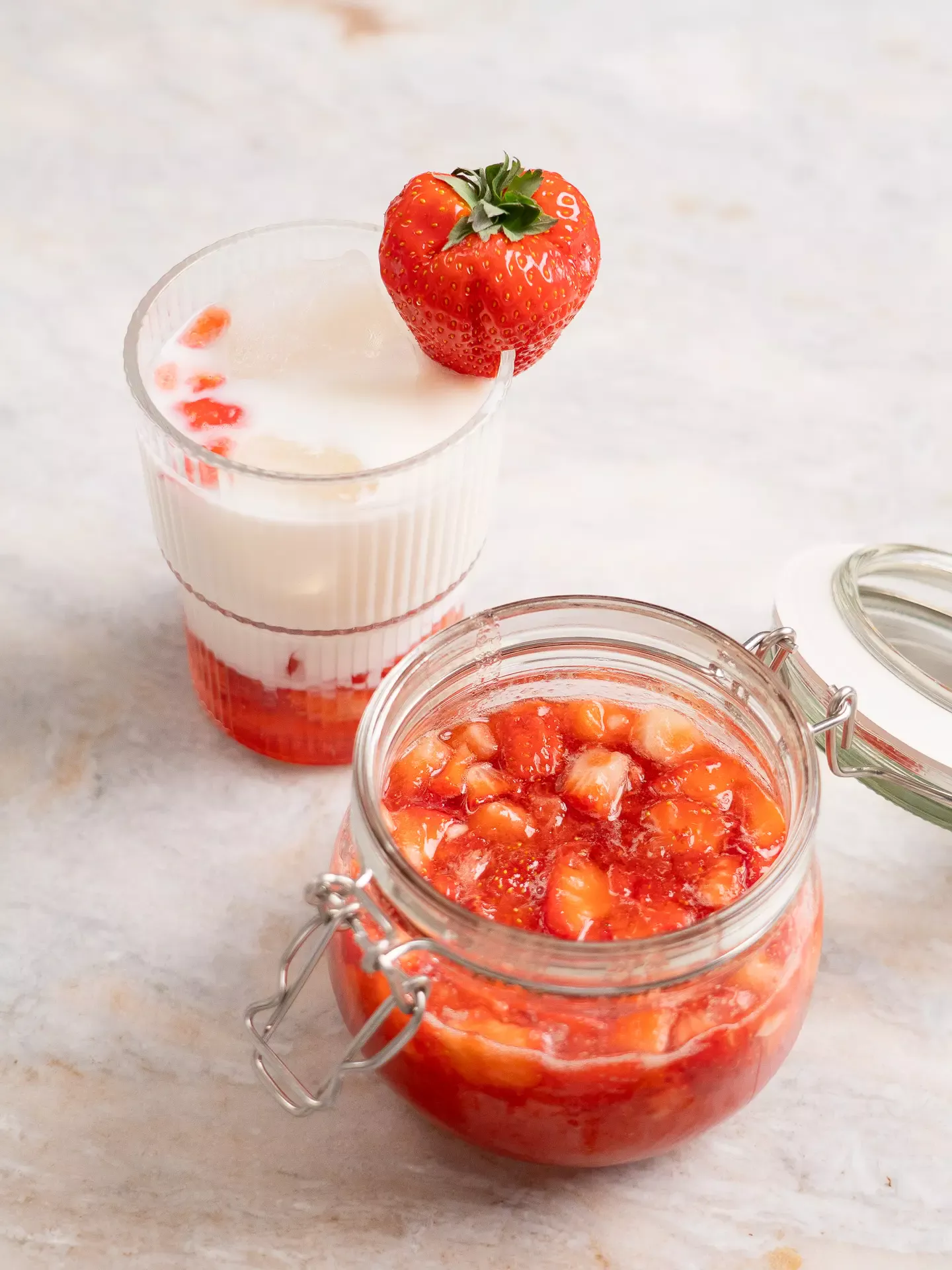
Wow, will definitely be making this all summer!